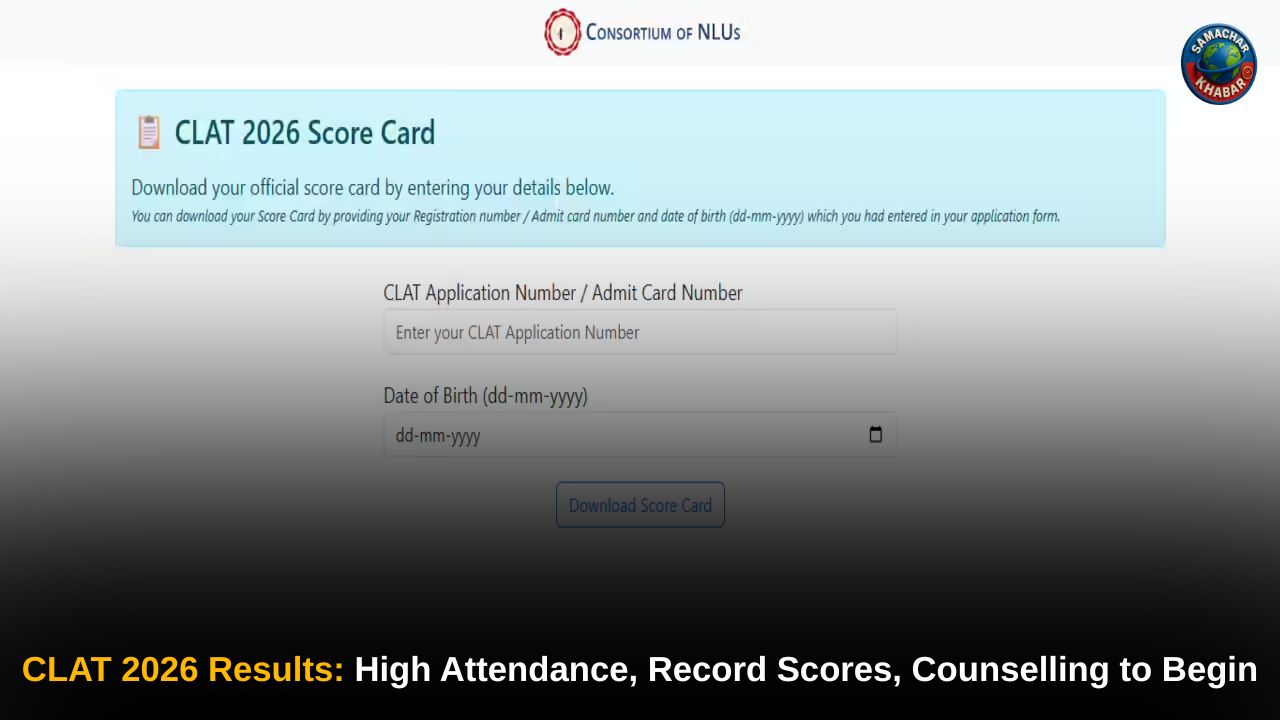Corruption is the poison that destroys foundation of nation slowly. It is one of the greatest obstacles to economic growth, political stability and social equality. Corruption has infiltrated every level of governance and social functioning from petty bribes to multi-crore scams. Due to invisibility, corruption is more dangerous, it operates silently. Global surveys and reports highlights the depth of corruption every year across countries.
According to Corruption Perceptions Index (CPI) of Transparency international, many developing countries continue to struggle with rampant corruption, while even developed countries face rising concerns over political lobbying and corporate manipulation.
Corruption is confined not only to government officials, but also across private sectors, education, healthcare, law enforcement and even common citizens who engage in bribery to get things done faster.
Meaning and Definition
Corruption can be broadly defined as the abuse of entrusted power for private gain. It involves dishonest or fraudulent conduct by those in authority to extract money, favors, or influence. The World Bank defines corruption as “the misuse of public office for private gain.”
Corruption can take many forms such as bribery, embezzlement, nepotism, fraud, extortion, blackmail, and favoritism. Due to these unethical practices, democracy is undermined, trust in public institutions gets eroded, and the gap between the rich and poor widens.
Historical Background of Corruption in India
In India, corruption is not a new phenomenon. Kautilya ( Chanakya ), has mentioned 40 types of corruption in his book Arthashastra as practiced by officials of Mauryan Empire. Even during the Mughal and British periods, corruption was widely spread in administration and trade.
After India’s independence, the founding leaders aimed to create a clean and transparent democracy. However, as bureaucracy expanded and politics grew more competitive, corruption deeply rooted itself in the system. Large-scale scams such as the Bofors, 2G spectrum, Commonwealth Games, and coal allocation scams exposed corruption at the highest levels of governance.
Forms of Corruption:
1. Petty Corruption: This corruption occurs at the lower levels of public administration. It includes small bribes paid to obtain certificates, licenses or to avoid fines. Though petty corruption is small in individual value, it is widely spread and affects millions of citizens daily.
2. Grand Corruption: This corruption involves large scale manipulation of policies, contracts or government projects. It often includes senior officials or politicians misusing their positions to gain enormous wealth.
3. Political Corruption: This corruption occurs when political power is used for private benefits such as vote- buying, illegal funding of elections and manipulation of government policies to favor certain groups or corporations.
4. Corporate Corruption: When private companies bribe officials or manipulate financial data to evade taxes or win contracts, it leads to this corruption. It not only distorts fair competition but also undermines ethical business practices.
5. Judicial Corruption: The entire judicial system becomes unreliable when justice can be influenced through bribery, favoritism or political pressure. This corruption erodes the faith of the citizens in law and order.
6. Educational Corruption: Educational institutions include corruption in selling admissions, fake degrees and favoritism in evaluation. This corruption damages the moral and intellectual base of society.
7. Moral and Social Corruption: Dishonesty, falsehood and selfishness in individual behaviour leads to moral corruption. The moral fabric of society weakens when people justify unethical acts for personal comfort.
Causes of Corruption
1. Greed and Materialism: The growing desires of people like luxurious lifestyle, wealth, and power often drives individuals to adopt corrupt practices.
2. Weak Law Enforcement: Because of weak judicial systems and delayed justice, corruption goes unpunished in many countries.
3. Political Funding: The high cost of elections forces politicians to seek illicit funds leading to policy corruption later.
4. Lack of Transparency: In government, opaque systems like procurement, licensing and project implementation, create opportunities for manipulation.
5. Bureaucratic Complexity: In administrative systems, lengthy procedures and red tape encourage people to pay bribes for faster service.
6. Low Salaries in Public Sector: In government jobs, inadequate salaries push some officials to seek illegal income sources.
7. Cultural Acceptance: Corruption has become normalised in some societies. People consider bribery a shortcut rather than a crime.
8. Lack of Public Awareness: Citizens tolerate corruption practices instead of resisting them when they lack awareness of their rights or fear authorities.
Impact of Corruption:
1. Economic Impact: Corruption widens the gap between rich and poor, weakens education and healthcare systems, discourages investment, and reduces public trust. Politically, it undermines democracy; socially, it erodes morality and justice.
2. Political Impact: Honest leaders often lose against corrupt rivals with deep pockets. Elections have become contents of money rather than moral leadership. Corruption undermines the power of democracy and governance.
3. Social Impact: Corruption breeds inequality and injustice in society. It weakens moral values and makes people tolerant against ethical behaviour. It also erodes trust of citizens about government institutions.
4. Environmental Impact: Because of bribery and weak enforcement, environmental issues like illegal mining, deforestation and pollution are rising day by day. Due to this, corruption leads to long term ecological loss.
5. International Image: Corruption affects international Image. Corrupt countries suffer from poor reputation at global level. It also affects tourism, foreign trade and diplomatic relations.
Examples of Major Corruption Cases in India:
1. 2G spectrum Scam (2008): Due to irregular allocation of telecom spectrum licenses, this scam estimated loss of 1.76 lakh crore rupees.
2. Commonwealth Games Scam (2010): This corruption scam in organising games led to misappropriation of thousands of crore rupees.
3. Coal Allocation Scam (2012): Coal allocation without proper auctioning caused huge losses to the exchequer.
4. VVIP Chopper Scam (AgustaWestland Case): In defence Procurement deals, high level bribery exposed deep rooted political corruption.
5. Satyam Scam (2009): IT giant Satyam Computer Service Corporate fraud involving falsified accounts and inflated profits.
6. Adarsh Housing Scam (2010): Flats were illegally allotted to politicians and bureaucrats for war widows and defence personnel.
These cases show the effect of corruption on every citizen across politics, business and administration; it may be direct or indirect.
Also Read: Whistleblower’s Journey: IFS Officer Sanjiv Chaturvedi’s Life and Battles
Corruption in Everyday Life:
Corruption at grassroots level affects ordinary citizens daily while big scams capture media attention. People have to pay bribes for getting driving licences, ration cards or land records. Contractors inflate bills to get government tenders approved. Even in hospitals, sometimes patients have to pay extra charges for faster treatment. Such experiences are creating frustration among honest citizens and also weakens people’s trust in governance.
Role of Media in Corruption:
The media plays an important role in exposing corruption. Investigative journalism has brought many scams to light and compelled authorities to take actions. However the media itself is not immune to corruption. It compromises independence by paid news, biased reporting and political pressure. Citizens have become more empowered to expose corrupt practices with the rise of social media.
But fake or misleading social media channels are blurring the line between truth and propaganda. Responsible journalism and digital awareness are therefore crucial to fight against corruption.
Legal Framework against corruption in India:
1. Prevention of Corruption Act 1988 (Amended 2018): It is the principal law defining offenses related to bribery and corruption among public servants.
2. Lokpal and Lokayukta Act (2013): It establishes independent ombudsman institutions to investigate corrupt practices against public officials.
3. Central Vigilance Commission (CVC): It supervises vigilance activities and advises the government on anti-corruption measures.
4. Central Bureau of Investigation (CBI): This premier investigative agency is handling major corruption and economic offence cases.
5. Right to Information (RTI) Act (2005): It empowers citizens to seek information from public authorities, promoting transparency and accountability.
6. Whistleblower Protection Act (2014): This act protects individuals who expose corruption or power misuse in government offices.
7. Benami Transactions (Prohibition) Act (1988, amended 2016): This act aims to curb black money and disclosed property ownership.
Despite these laws, due to lengthy legal procedures and political interference, the success rate of conviction in corruption cases remains low.
Global Fight Against Corruption:
International organisations such as the United Nations and World Bank are leading efforts to promote good governance.
1. United Nations Convention Against Corruption (UNCAC): It was adopted in 2003, to provide a comprehensive framework for countries to strengthen anti-corruption measures.
2. Transparency International: This is a global NGO that publishes the Corruptive Perceptions Index, ranking countries by their perceived corruption levels.
3. OECD Anti-Bribery Convention: It aims to criminalize bribery of foreign public officials in international business transactions.
India is a signatory to several of these conventions and cooperates with global partners to trace illicit funds and improve governance standards.
Technological Measures Against Corruption:
Digital technology has emerged as a powerful weapon against corruption.
1. E-Governance: Online services like e- governance reduce the direct contact between citizens and officials. As a result chances of bribery get reduced.
2. Digital Payments: It helps curb black money circulation by cashless transactions.
3. Aadhaar and Direct Benefit Transfer (DBT): It prevents leakage in welfare schemes by directly crediting money to beneficiaries’bank accounts.
4. Blockchain Technology: It offers transparent record keeping for land registration, procurement and financial transactions.
5. Social Media Vigilance: Citizens are using social media platforms to expose corrupt acts and demand accountability.
Public Participation and Awareness:
1. Corruption cannot be fought by the government alone, it requires active citizen participation. Citizens must be aware of their rights and ready to report wrong doings.
2. People have mobilized by public vigilance groups and NGOs like India to demand cleaner governance.
3. To shape honest citizens, education related to ethics and morals should be given in educational institutions.
4. Society must give priority to honesty and integrity over material success.
5. The system begins to change when individuals refuse to give or take bribes and when they report corruption fearlessly.
Government Initiatives:
The Government of India has taken several initiatives to promote transparency:
1. Digital India Mission to digitize public services.
2. Make in India and Ease of doing business initiatives to reduce red tape.
3. Pradhan Mantri Jan Dhan Yojana for financial inclusion and direct benefit transfer.
4. Online grievance redressal portals for citizens to file complaints easily.
However, Strict enforcement and public cooperation is necessary for implementation of these initiatives.
The way forward:
1. Strict Enforcement: Strict enforcement of anti-corruption laws is important with no political bias. Quick trials and severe punishment will deter potential offenders.
2. Transparency and Accountability: Through RTI and online dashboards, every public office should maintain transparent records accessible to citizens.
3. Judicial Reforms: To ensure speedy justice, fast-track courts should handle corruption cases.
4. Political Reforms: The political field should be cleaned up by transparent election funding and disqualification of corrupt leaders.
5. Administrative Reforms: Corruption can be minimised by simplifying procedures and reducing human discretion in decision making.
6. Moral Education: From an early age, schools and colleges must inculcate ethics, honesty and civic responsibility.
7. Empowering Whistleblower: Those who expose corruption and encourage transparency, should be protected with safety and initiatives.
Role of Sant Rampal Ji Maharaj in Eradicating Corruption:
Sant Rampal Ji Maharaj has played a vital role in awakening people against the evil of corruption through his spiritual knowledge and personal example of honesty. He teaches that true devotion purifies one’s character and frees individuals from greed, deceit, and bribery. His followers live disciplined lives guided by strict moral conduct, rejecting all forms of corruption.
Sant Rampal Ji Maharaj emphasizes through his discourses based on holy scriptures that corruption stems from ignorance of true spiritual knowledge. Millions of his devotees have reformed their character, rejected corruption in all forms and become examples of integrity in society by accepting the path of true devotion and following the divine rules of conduct (maryada).
Conclusion
Corruption is a deep rooted moral disease that weakens the very foundation of society. It thrives where greed overpowers conscience and dishonesty overshadows truth. To eradicate it completely, both external reforms and inner purification are essential. Sant Rampal ji Maharaj has shown that true transformation begins when individuals adopt honesty, humility and spiritual discipline in daily life.
His teachings based on true devotion to Supreme God Kabir Saheb Ji inspires people to live righteously without succumbing to greed or injustice. When people move toward a just peaceful and enlightened world then only society gets free from clutches of corruption.
FAQs on Corruption
1. What is corruption?
Ans: Corruption is the misuse of public power, position or authority for personal gain. It includes bribery, fraud, favoritism, embezzlement and dishonest behaviour that harms public interest.
2. What are the main causes of corruption in society?
Ans: The major causes include greed, lack of moral education, weak laws, poverty, political instability and the absence of strong ethical and spiritual values among people.
3. How does corruption affect society?
Ans: Corruption destroys trust of citizens in government, weakens democracy, increases inequality and hinders national development. It leads to injustice and moral decay within communities.
4. What is the role of Sant Rampal Ji Maharaj in eradicating corruption?
Ans: Sant Rampal Ji Maharaj emphasizes moral reform through spiritual knowledge and true devotion. He teaches that by following the path of truth, honesty and righteousness given by Supreme God Kabir Saheb, individuals naturally reject corruption and unethical practices. His followers live disciplined, honest lives that contribute to building a corruption-free India.
5. How can we eliminate corruption from society?
Ans: Corruption can be eliminated by enforcing strict laws, promoting transparency and by transforming people’s character through moral and spiritual awakening. When individuals become truthful, selfless and God fearing, not only corruption but also other social crimes will get eliminated from their roots.

















